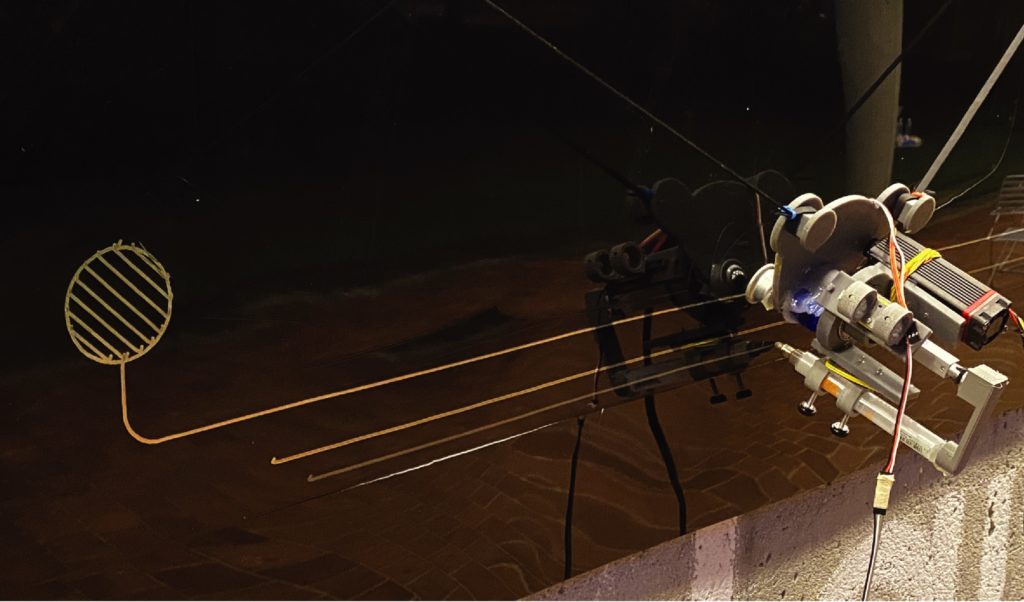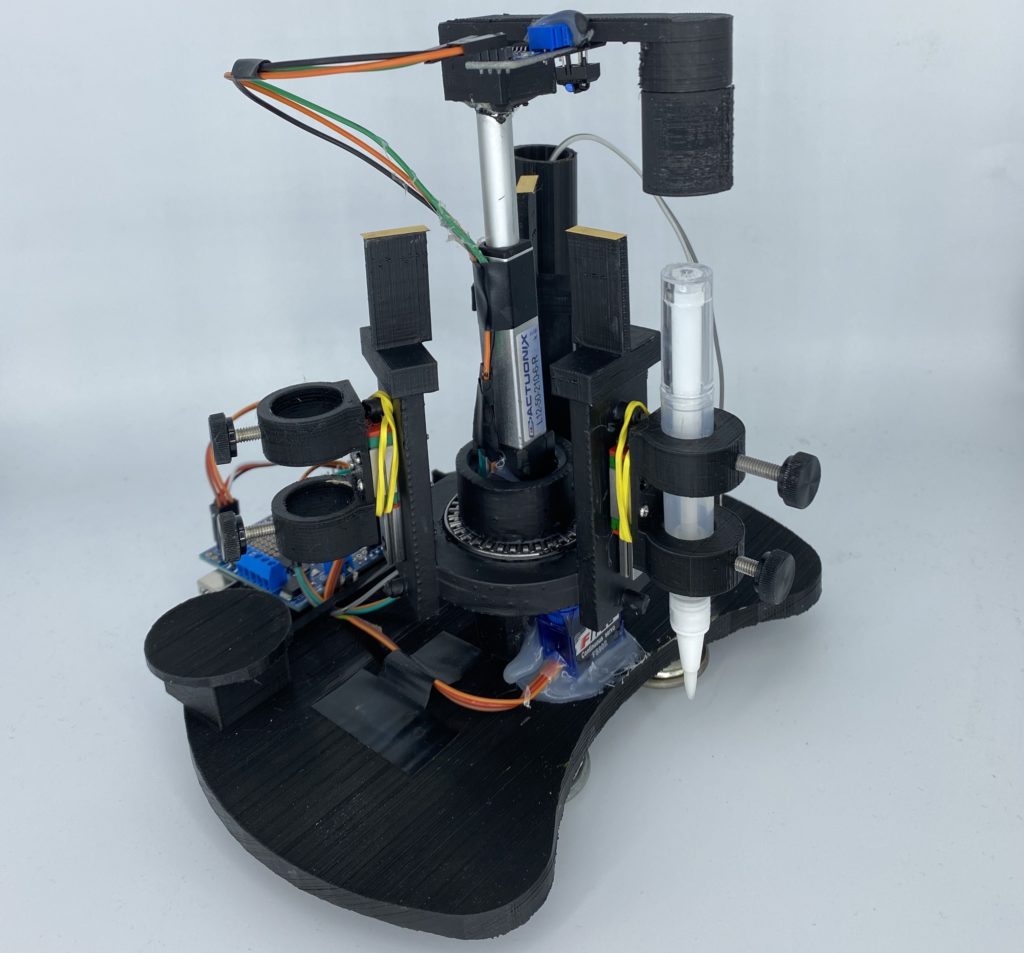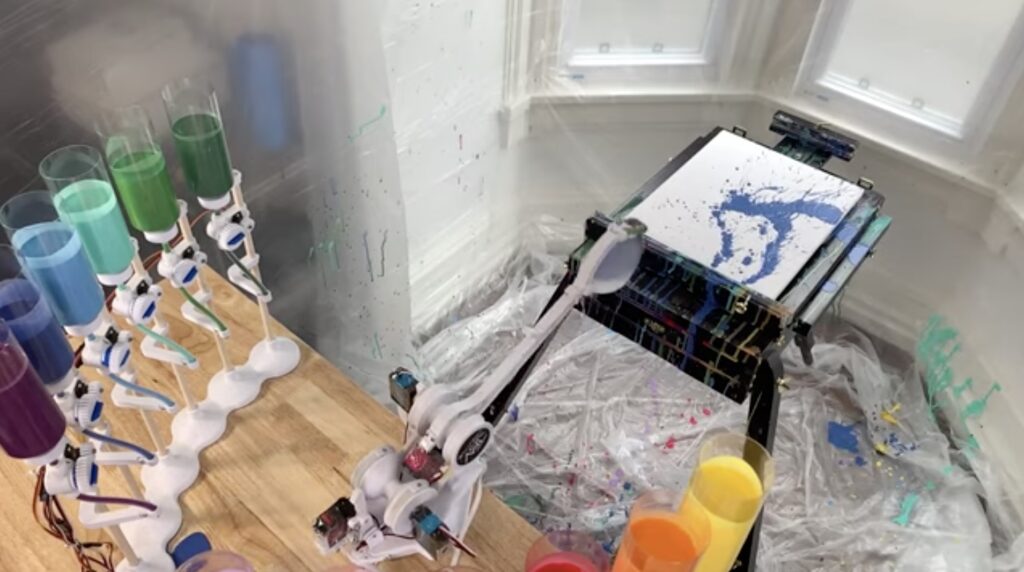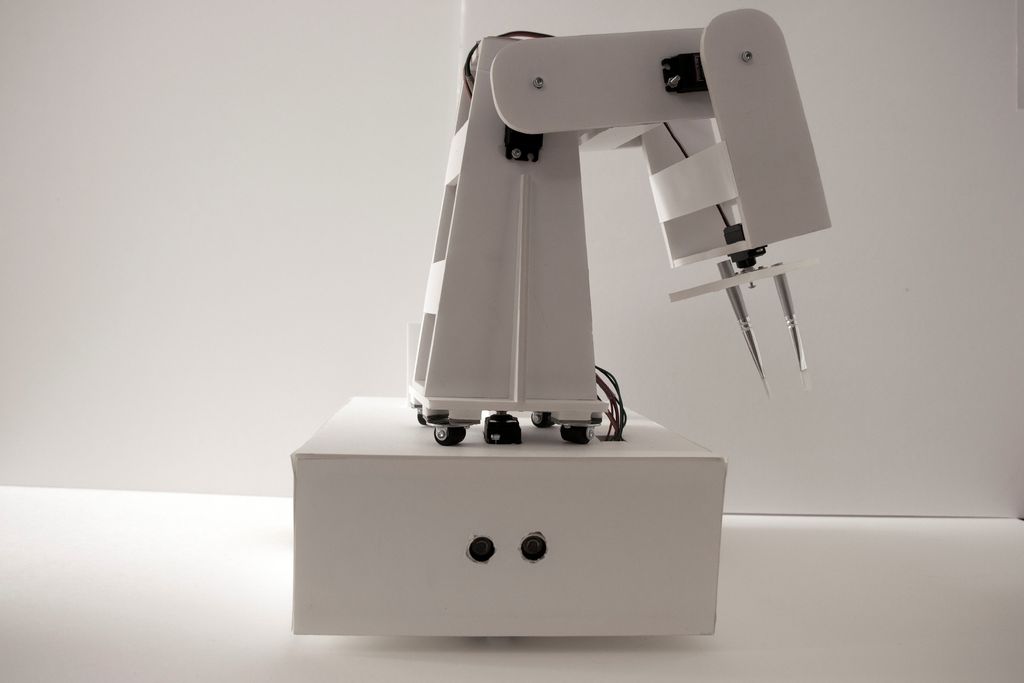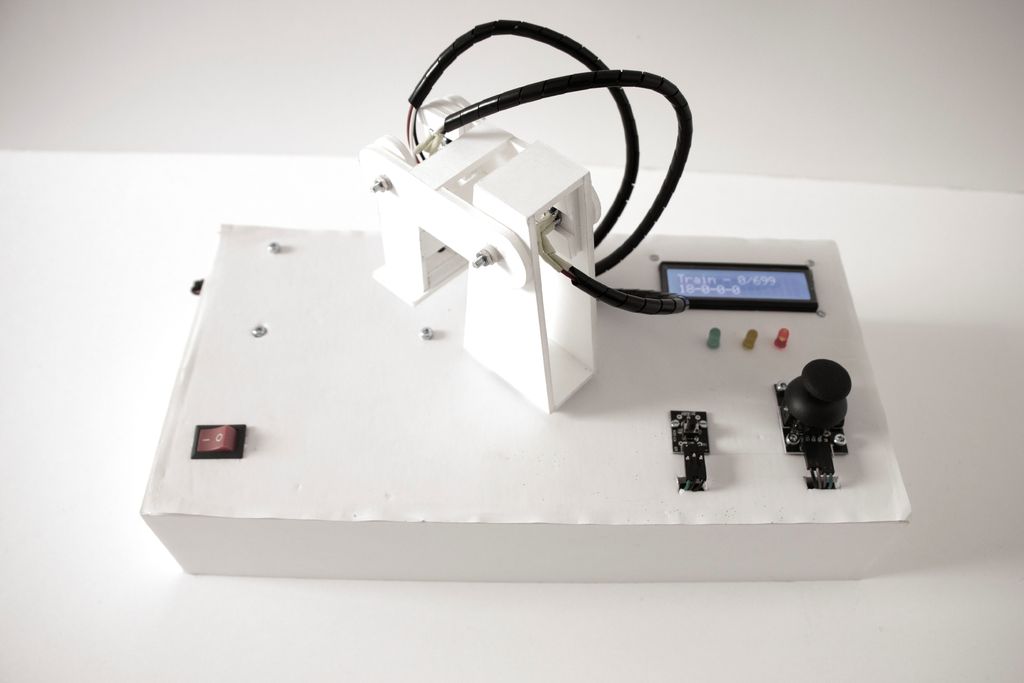01

Driven by a desire to print massive pieces of art on his new studio’s blank wall, Shane Wighton of the YouTube channel Stuff Made Here set out to create a large painting robot, which he calls “Janksy” after the famous artist and the jankiness of the construction.
In principle, the device works by using a large gantry that spans the entire length of the wall to move horizontally whilst a series of cables and pulleys move it vertically. To avoid vibrations caused by moving such a large amount of weight so quickly, a second and far smaller/faster gantry houses a spray nozzle that deposits paint dots. All of this hardware is controlled by an Arduino Uno that translates positional commands into movements for the onboard stepper motors and servo.
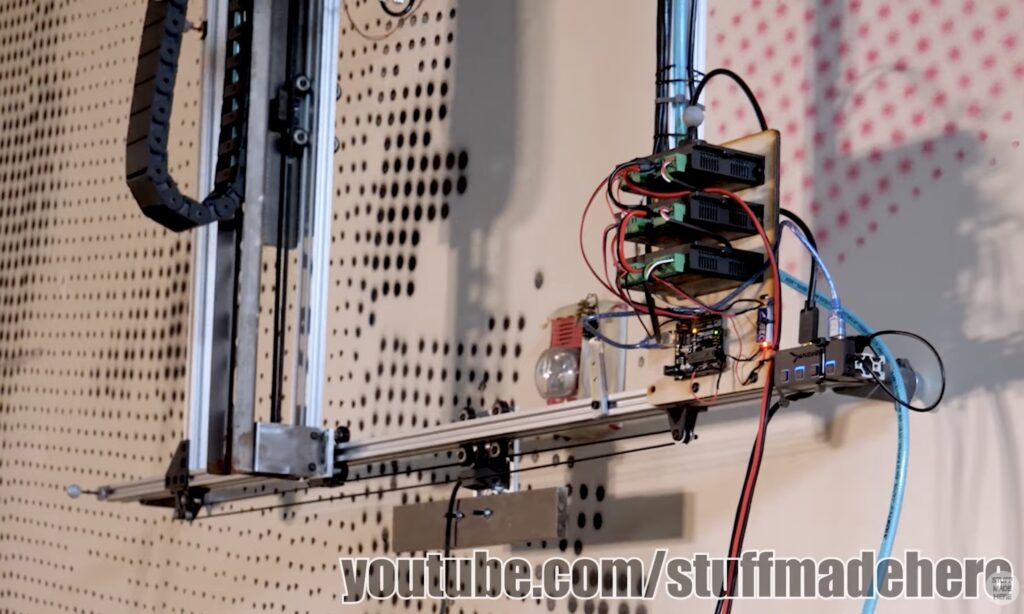
Generating the dot array is done by first taking the initial digital image and converting it into four layers that each correspond to cyan, yellow, magenta, and black, just like a traditional inkjet printer. From there, every dot is scaled based on the intensity of the color, with larger dots appearing brighter and smaller ones showing up as dimmer.
After painting the wall over the course of several days, Wighton’s mural of his wife’s signature glare was complete. And even though it doesn’t look like much up close, taking a few steps back makes the entire thing come alive — imperfections and all.
The post YouTuber Shane Wighton built a robot that paints murals appeared first on Arduino Blog.

